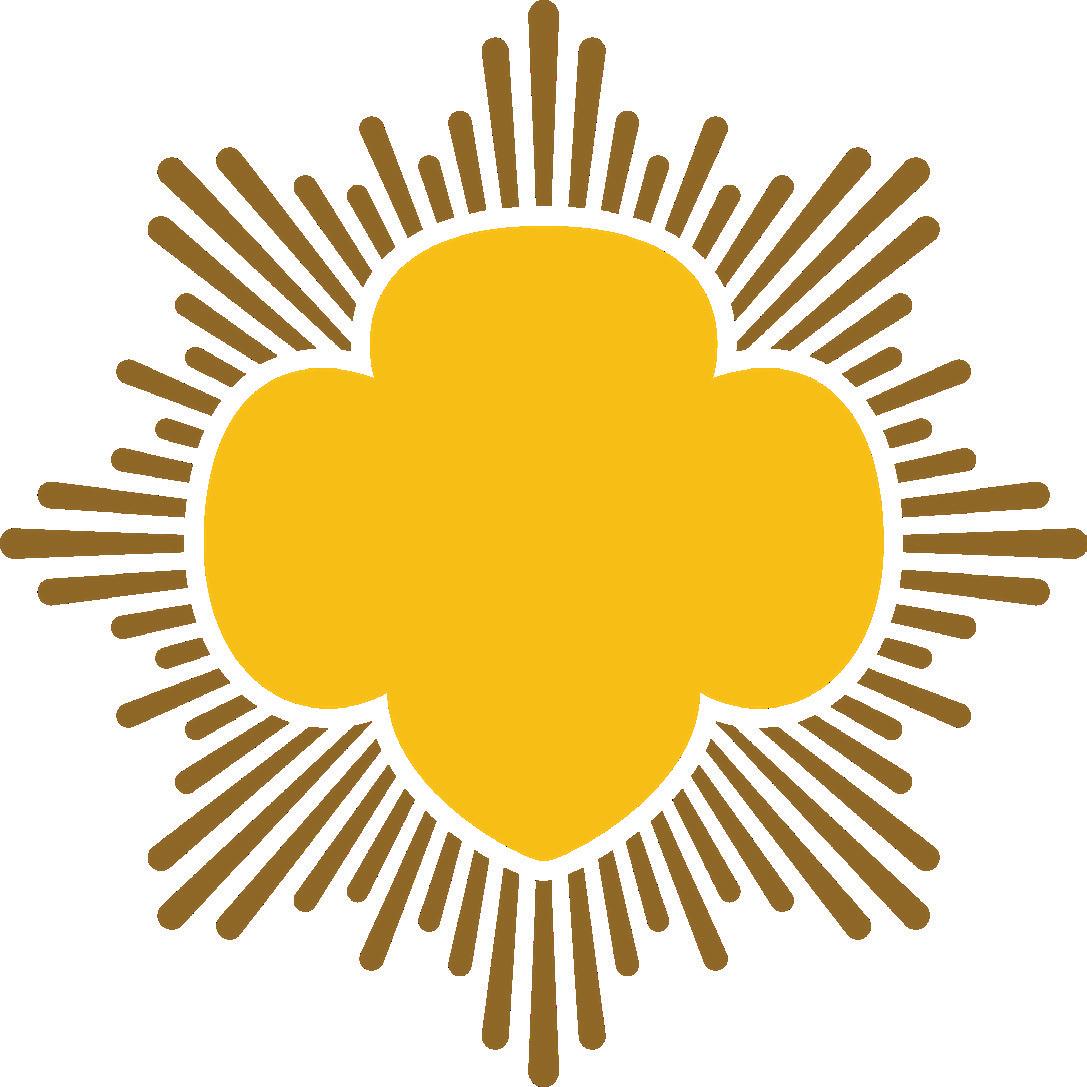

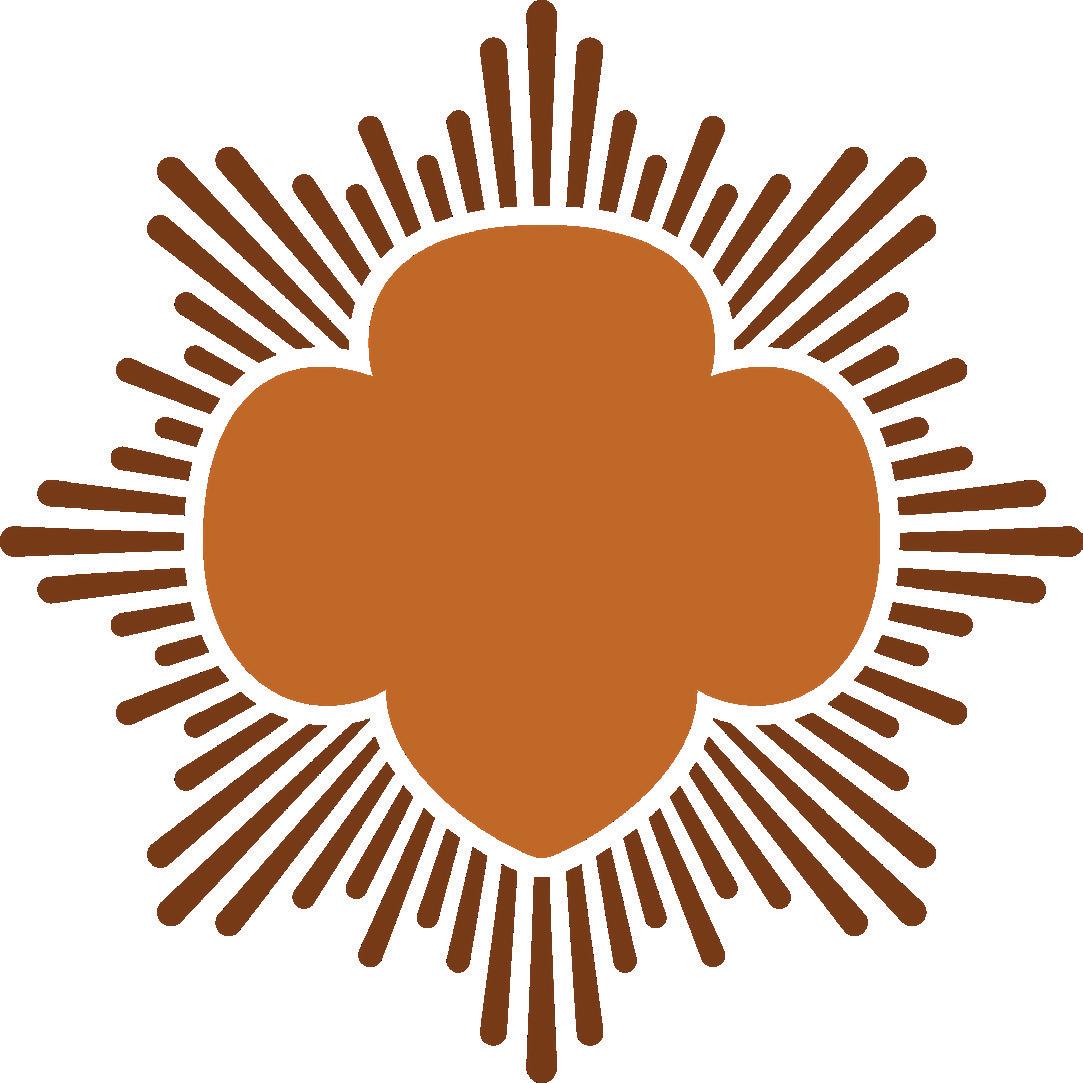






GOLD AWARD, SILVER AWARD, BRONZE AWARD
2024 – 2025
Every day, Girl Scouts light the world with their compassion, courage, and commitment to making a difference. This year, our Gold Award Girl Scouts once again rose to the challenge, fearlessly tackling some of our communities’ most pressing issues. From improving childhood literacy and breaking down gender barriers, to teaching music courses to orphaned children and advancing conservation efforts, their leadership has been nothing short of extraordinary.
We are thrilled to honor every Girl Scout who earned the Gold Award between April 1, 2024, and March 31, 2025 — as well as our incredible Silver and Bronze Award recipients — in our Highest Awards Yearbook. As you turn the pages and discover their journeys, we know you’ll be inspired by their passion, creativity, and unstoppable spirit.
The Gold Award is not just an achievement; it is a reflection of a Girl Scout’s heart, vision, and ability to lead lasting change. It is the highest honor a Girl Scout can earn, requiring bold thinking, tireless dedication, and a deep desire to leave the world better than they found it. Through their projects, Girl Scout Seniors and Ambassadors have transformed dreams into action and action into lasting impact.
Here in the San Jacinto Council, we proudly celebrate 87 remarkable young women who earned the Gold Award this year. Their achievements stand as a powerful testament to what’s possible when girls are supported, empowered, and believed in — by their families, leaders, mentors, and sister Girl Scouts.
We also honor the 262 Girl Scout Cadettes who earned the Silver Award, showing early on their commitment to service and leadership. Their journeys are only beginning, and we cannot wait to see the amazing things they will accomplish. And to the 643 Girl Scout Juniors who achieved the Bronze Award — you are laying the foundation for a future filled with purpose and possibility.
To every Girl Scout featured in this year’s Highest Awards Yearbook: your determination, creativity, and compassion are lighting the way for a brighter tomorrow. We are endlessly proud of you. And to the parents, volunteers, and mentors who stand beside them: thank you for believing in girls and fueling their dreams.
Together, we are building a world where courage, confidence, and character create an unstoppable force for good — and the future has never looked brighter.
Sincerely,
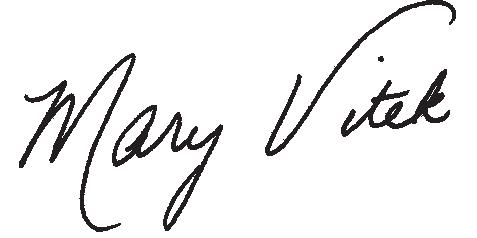
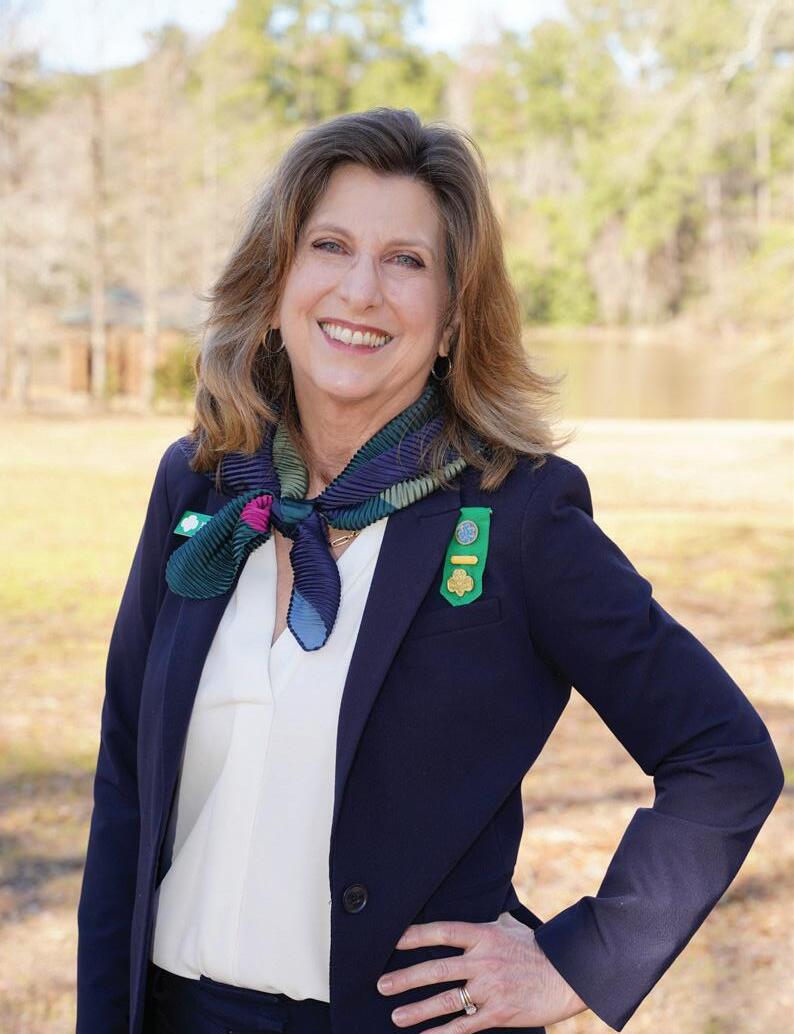
On my honor, I will try: To serve God and my country, To help people at all times, And to live by the Girl Scout Law.
I will do my best to be honest and fair, friendly and helpful, considerate and caring, courageous and strong, and responsible for what I say and do, and to respect myself and others, respect authority, use resources wisely, make the world a better place, and be a sister to every Girl Scout.
Ambassador Hadley Moore developed a fine arts curriculum from scratch to help Houston refugee children learn literacy through art. Hadley taught classes for 100 children at a summer camp hosted by Prestige Learning Institute in downtown Houston. The ambitious project earned Hadley a Gold Award, the highest honor a Girl Scout can receive.
Many refugee families come to Houston speaking little or no English. When the school year ends, their children often lack opportunities to practice speaking English with native speakers during the summer. To address this, the Prestige Learning Institute offers an English summer camp to improve their English proficiency. Hadley volunteered at the institute and accepted an invitation to teach art classes. She then developed the assignment into a Gold Award project, drawing inspiration from Mariel Sanchez's article “Education for Resettle Youth in Houston: Critical Issues through a Children’s Rights Lens.”
“When they came to me and said we really need an art teacher at camp, I said I would love to do that,” Hadley said. “I put my heart into it. I have had my fair share of trouble learning the English language because of Dyslexia. The kids want to go to school, and their parents want to see them do better, but they can’t practice English at home. The camp provides them a safe space to learn.”
Hadley, who has taken art classes since childhood, designed curricula for four art projects, each with a literacy component. Her mom, an English as a Second Language teacher, and her aunt, a graphic designer, lent a hand. Additionally, she created more than 400 prep kits for the projects containing the necessary materials for each project.
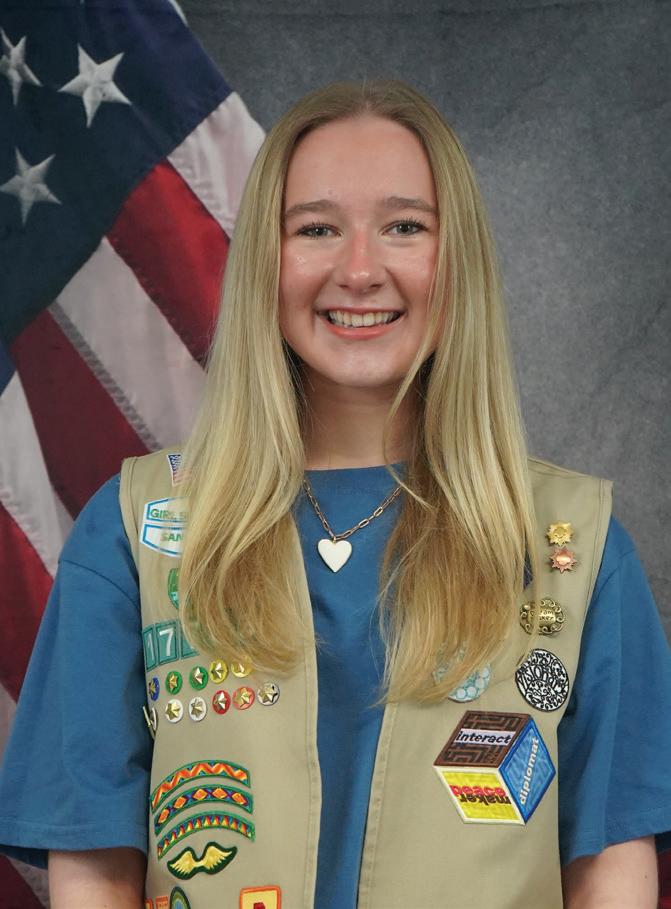
Before camp started, Hadley recorded instructional videos for the art project to prepare her team of volunteers. She also provided hands-on instruction every morning before the sessions. The weeklong camp consisted of two one-hour art sessions each day. Hadley taught eight sessions with the help of 10 volunteers who assisted the children as they worked on their art projects. Each session had 50 students from six countries, speaking eight different languages.
One of the projects involved the students making a clay fish on a canvas made from a recycled Girl Scout Cookie box. The students painted the ocean on the canvas, rolled out clay, and used fish-shaped cutters to create fish cutouts, which they placed on the canvas to paint. They also learned about the fish habitat by filling in missing words in sentences, which helped them practice adjectives and nouns in a fun way. “The kids had an amazing time,” Hadley said.
The project posed some challenges. Hadley initially expected to teach first through sixth graders but quickly had to adapt when she discovered she had pre-k students in the art sessions. She simplified some projects and used fewer materials to accommodate younger children. Additionally, she had two students who didn’t speak English. Although they struggled to understand every word, Hadley patiently demonstrated how to use a paintbrush or roll out the clay, guiding them until they could follow along. One day, the students' clay fish broke, and she seamlessly transitioned into an impromptu lesson about how God can make new things from broken ones.
Hadley dedicated more than 247 hours to the project and lead a team of 33 volunteers who contributed in various ways. She said she loved every minute. “If I can take four days volunteering to show kids love and kindness and attention, it is so worth it,” Hadley said. “It allowed me to grow in patience and compassion, and I learned how to compromise.”
Her project gained the attention of the Ladies for Literacy Guild, which presented the Prestige Learning Institute with a $5,000 grant for its afterschool program. Furthermore, a mobile bookstore gave all the students books to take home.
Hadley’s art videos are available for free at her store, Hadley Gold Award Literacy Through Art, on the Teachers Pay Teachers website. Her curriculum for the self-portrait art project has received more than 300 downloads so far. In addition, some of her volunteers from Tyler used her curriculum for Vacation Bible School. They later donated the curriculum and materials to a Christian school in an underserved area, supporting affordable education options in the community.
Her advice to other Girl Scouts who want to pursue the Gold Award: “Go for it! Start sooner than later, and don’t be afraid to ask for help.”
2025
Congratulations to the recipients of Girl Scouts’ highest award!
The following pages include descriptions of Gold Award projects from Girl Scouts who completed their publicity form and photo to be recognized in the Gold Award Yearbook.
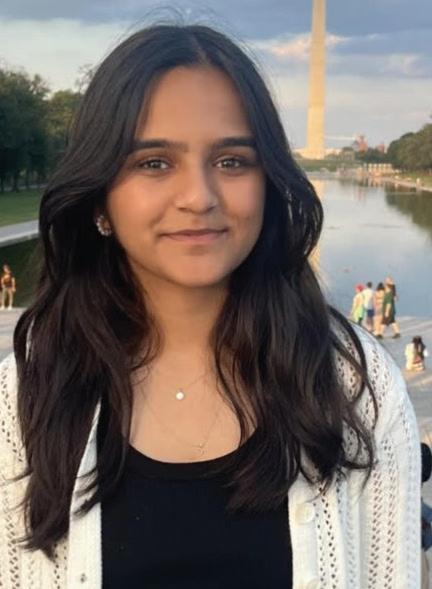
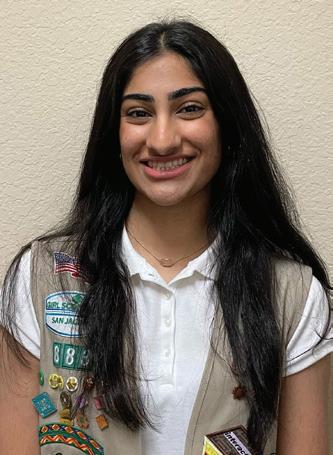
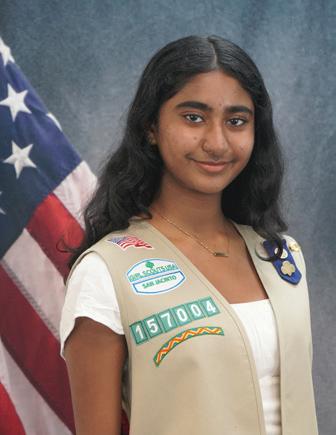
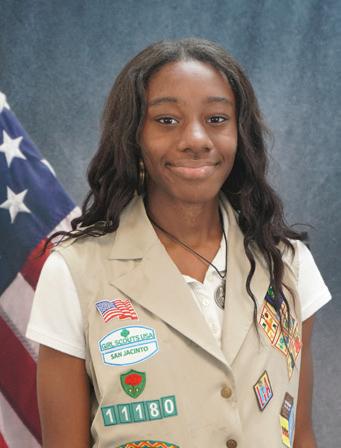
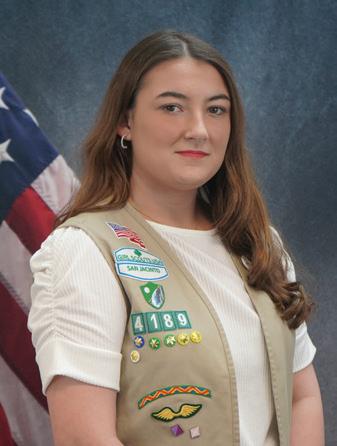
Nabiha Ahmed partnered with the Club at New Territory and Girls Who Believe to inspire middle school girls to pursue underrepresented STEM fields. She hosted a three-day in-person workshop with online access through her website. The curriculum and presentation introduced the audience to STEM fields like chemistry, physics, engineering, and technology. Girls Who Believe will include Nabiha’s project in their efforts.
Rimsha Ali worked to raise awareness about breast cancer in her religious community for her Take Action project. She planned and hosted six information sessions in three different languages which included presentations by doctors and breast cancer survivors. Rimsha brought free mammogram screenings to her community. She held smaller sessions to highlight the importance of screening for prostate cancer.
Shefalika Arul taught orphaned children in India how to play the piano as a coping mechanism and confidence builder. After sending the orphanage an electric keyboard and piano lesson books, she taught about 24 lessons over a six-month period to eight students via Zoom. She recorded half of the lessons and posted them on YouTube for global access. A group will provide music teachers who specialize in different instruments to continue teaching the students.
Zhurii Baker had a concern for hungry children and wanted to find a way to feed them. With five organizations, she hosted a community resource fair, which included information about mental health, financial assistance, employment services, education opportunities, and food assistance. The Kids Meal Organization, which has Zhurii’s project plan for future use, distributed free, healthy meals.
Ava Barton experienced bullying during her education, and when she saw it happening to her younger brother, she decided to act. She worked with the Lumberton ISD to start a kindness group at her high school. Students heard from a mental health professional, social skills educator, anti-bullying expert, physical fitness coach, and martial arts master. Bonding activities and service projects are also part of the club meetings.
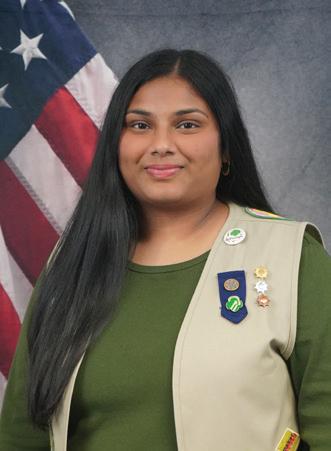
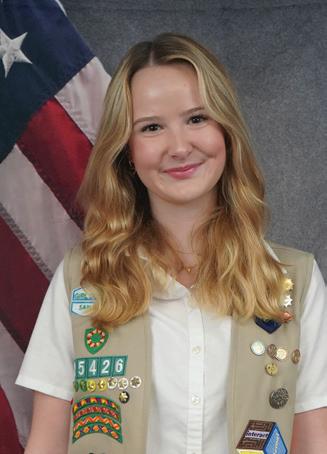
Nikita Basappa organized 13-weekly math tutoring sessions at the Cy-Hope Center. Nikita recognized the role of math in shaping future success. In addition, she developed the “Math for Learners” global educational website and with the Wix platform produced a series of educational math videos designed to enrich the learning experience. The lesson plans and videos are accessible on the “Math for Learners” website.
Ava Black created a Lego club at the Nehemiah Center for children and collected hundreds of LEGOs, designed lesson plans, and led club meetings. She also recruited 12 volunteers from her high school service organization to work with the club. They will keep the club going. She looks forward to more children from the Nehemiah Center becoming interested in STEM courses and careers by creating a foundation with the club.
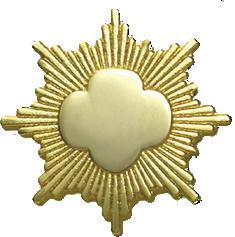
Hannah Bradford designed and built a 100-square-foot pollinator garden. She collaborated with teachers at a middle school to educate their students about the issue. The teachers use the pollinator garden as part of the curriculum. Hannah also created four videos on pollinator topics for the school and others to use. The grand opening of the garden included a pollinator awareness presentation.
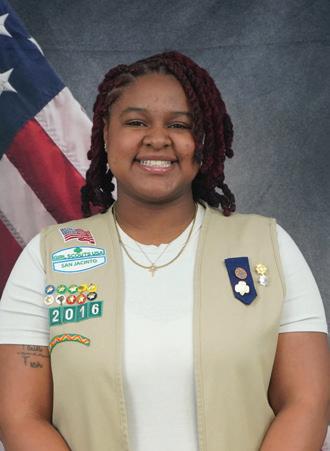
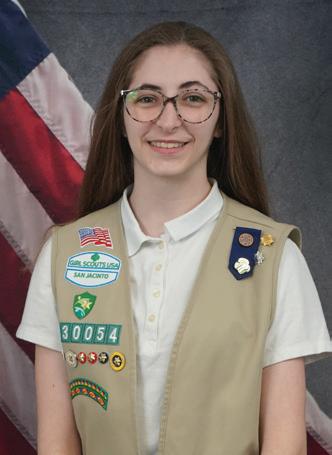
Caeli Bridges worked to increase awareness and knowledge about mental health issues for teenage girls as part of her Take Action project. She and her team created a Girl Talk presentation, which was later published as a Start the Conversation podcast. She also created a positive affirmation packet and held a balloon release. The Precious Pearls group will continue to give Girl Talk presentations.
Kaylee Buffo designed and built a nature trail in a wooded area near the YMCA of Southeast Texas. The trail also provides an opportunity for the public to learn how to identify plants along the trail and practice “Leave No Trace” principles. She and her team built three bridges, posted plant identification and Leave No Trace signs, along with a welcome sign, and created trail surveys. She promoted the trail during the YMCA’s fall festival.
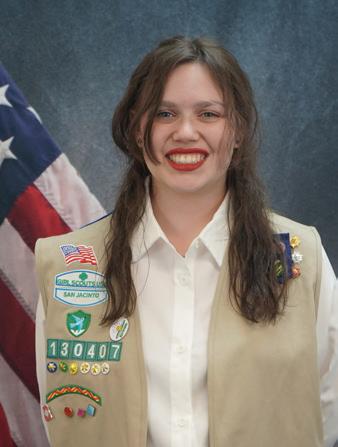
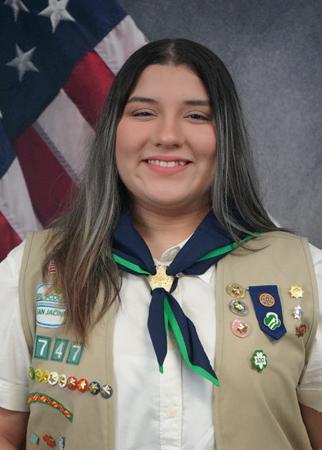
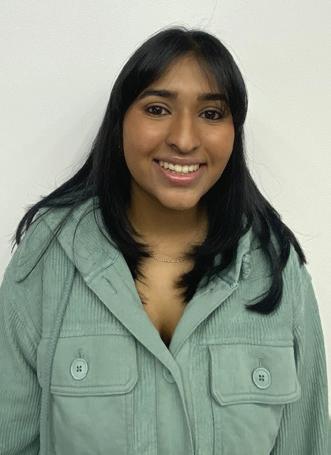
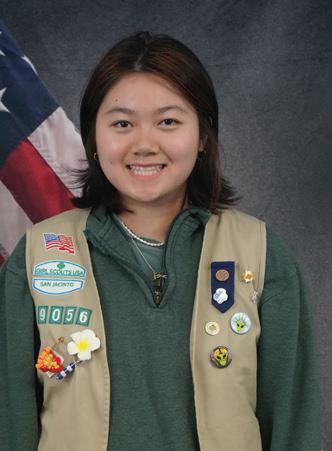
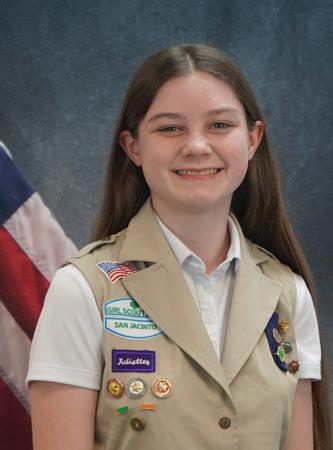
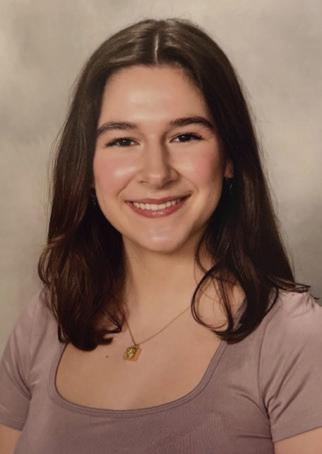
Danica Burrell partnered with East Chambers Elementary to share available resources in literacy with parents and students. At her event, Danica presented the resources to parents and students to help increase literacy in education. Additionally, her presentation included at least one volunteer who spoke Spanish to a broader audience. Danica and her team reached 67 people, including educators eager to learn of additional literacy resources.
America Cadena aimed to focus on bringing creativity back in children by hosting art workshops at a local daycare. Each session taught a different skill which included stability, self-control, leadership, entrepreneurship, compassion, communication, and confidence. The center was impressed with the feedback and will continue to use her lesson plans annually.
Reya Chandran, after learning to deal with her own allergies, focused her project on increasing the awareness of allergies and educating people about them. She designed a website with articles about all aspects of allergies including how to prevent/deal with reactions, allergy testing, and allergy treatments, along with quizzes at the end of each article to see what was learned. An inperson event and presence on Instagram also increased her impact.
Olivia Chang saw the need to assist elders in navigating fast-changing technology and partnered with a school club to create an eight-week course on technology. The course was held at Brookdale Senior Living. The school club, Generational Youth Humanitarian Organization, will continue these monthly classes. Olivia posted videos of the classes on YouTube so more will have access to them.
Brianna Colvin discovered that adoption at the local animal shelter, where she volunteered, could be reduced with training and improving the health of its dogs. With her team, she revamped their dog park, made dog training information available, and increased the positive press, increasing awareness in the community and attracting more volunteers to the shelter.
Rachel Comfort partnered with the Santa Maria Hostel to create a space for their youngest residents to learn and strengthen their emotional intelligence. She and her team worked to convert a room into a comfort corner and art alcove, which includes a cozy reading nook, sensory items, and soothing activities. They also created posters to help the children understand their emotions better and gave suggestions to assist with emotional regulation.

Ariana Conant saw the lack of creative writing instruction in her local schools so she was inspired to host six monthly writing workshops at her local library. The workshops taught different genres including fantasy adventure, science fiction, poetry, and realistic fiction with presentations from three local authors about their writing experiences and overcoming writers' block. Team members will be continuing the workshops monthly and keeping their website updated.

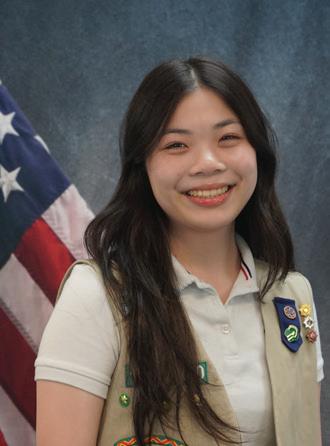
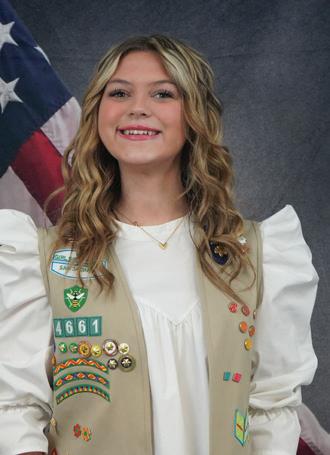
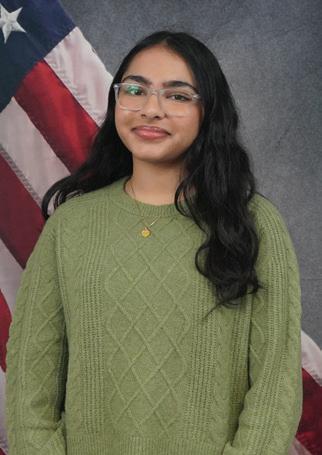
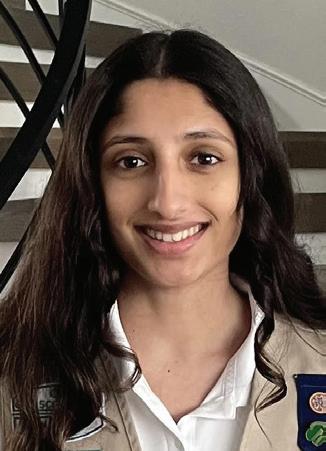
Sophia Cook planned her project to address the lack of funding and support for the Klein Forest High School orchestra due to district budget cuts and changes following the COVID pandemic. Her team researched, planned, and built new shelving and organized the orchestra’s storage room. With orchestra officers, she made a video to raise awareness of the importance of supporting the fine arts. The school will continue to show the video
Kim Dang decided to help the members of her church, especially the elderly, to be safer in their church parking lot after her grandfather collided with a light pole. First, they cleaned and then painted the light poles in a noticeable, bright yellow to make them more visible to everyone. They created a video with parking lot safety procedures and used it during workshops to educate everyone about keeping their parking lot safe. She gave the video to the church so they could use it as needed.
Kaitlin Davis loved playing Gaga Ball at church camp and wanted to bring this enjoyable, outside game to the youth in her community by building a Gaga Pit in a local public park. Signage addresses the importance of giving children a reason to get outside, be physically active, and socialize while their Opening Day event included a tournament. The city of Sour Lake will continue to host annual Gaga Ball tournaments.
Janvie Deshpande wanted to help lowincome students gain access to proper music education for her Take Action project. She partnered with the Houston Youth Symphony and its CODA program that works with lowincome schools. Janvie taught students how to play the violin and created lesson plans with instructional videos. These lesson plans and videos are available on YouTube.
Zara Dhukka, along with volunteers from her school and a faith-based center, raised awareness about water pollution with seven cleanups at Cullinan Park. Plus she created and installed two anti-pollution signs at the boardwalk, and published an educationbased website to share the project. Two of her volunteers will monitor and refresh the project website as needed for future viewers.
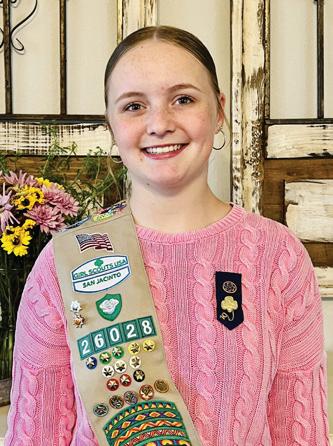
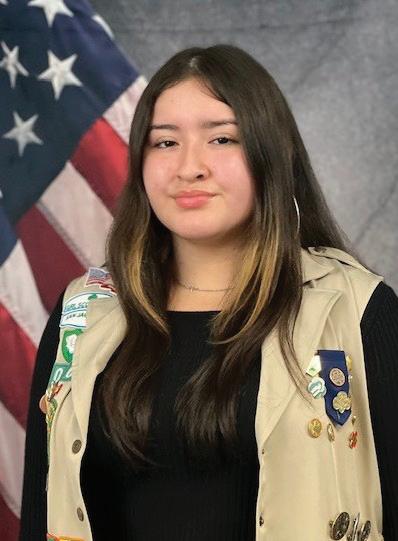

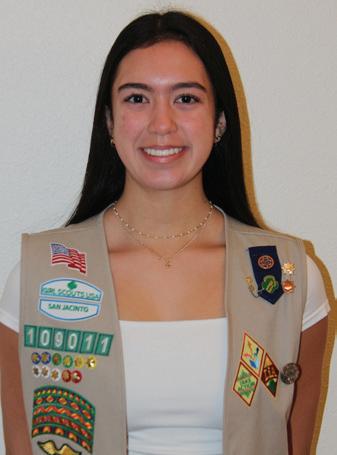
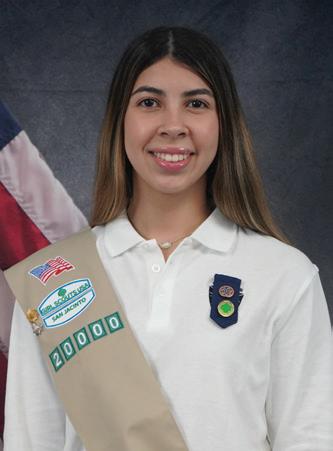
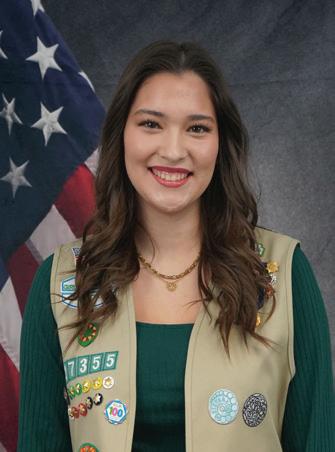
Isabelle Durgan held a book drive to fill two mobile book carts to benefit second and third graders at a Title 1 elementary school. They collected over 800 books, designed bookmarks, and gave seven presentations about the importance and benefits of reading to more than 250 students. The success of their book drive led to a donation of 100 books to a local day care center.
Aiyana Duron-Larson wanted to help veterans with their psychological well-being and chose to work with an equine therapy organization. She worked with 30 volunteers and six companies to create an educational brochure, build three off-the-ground horse feeding stations for a therapeutic horsemanship group, and design a specific brochure for the Knights of the Grail that will increase awareness of its efforts for military veterans and first responders.
Bianka Enriquez focused on improving educational opportunities in lower-income communities. She and her volunteers organized a two-week educational camp in Belize for children ages 12 to 14. In addition to English and math skills, the children also learned life skills like goal setting and study habits. Their parents were given resources so the children could continue learning at home and reinforce the skills acquired during the camp.
Mia Ensley partnered with Corridor Rescue to provide mental enrichment activities to shelter dogs and educate the public on the importance of mentally enriching their dogs. She and her team built two agility bridges, and six enrichment treat rollers. In addition, she created a brochure for Corridor Rescue. The brochures were distributed at an adoption event and dropped off at pet stores and vet offices.
Katerina Escobar desired to help children improve their reading comprehension, so she created short, catchy songs to teach new words, synonyms, and antonyms. She then presented songs to elementary school students. Katerina also created a YouTube channel as a permanent, accessible platform that allows students, parents, and teachers to access the content from anywhere. With over 2,600 subscribers, she surpassed her goal of 150 followers.
Ava Garza was challenged with public speaking so she decided to create workshops and resources for high schoolers that focused on building confidence and teaching practical communication skills. Hosting her workshops, lesson plans, and materials on a website ensures that it is accessible nationally and internationally to all individuals who wish to improve their public speaking skills.
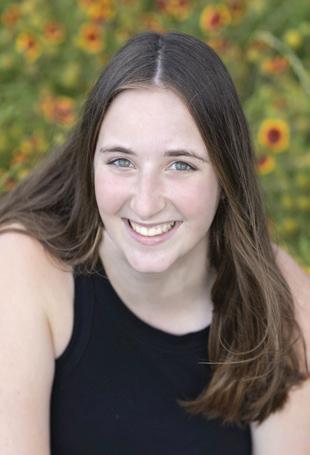
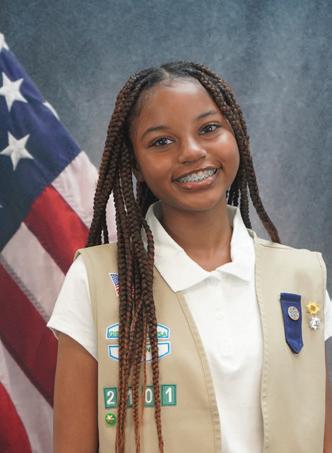
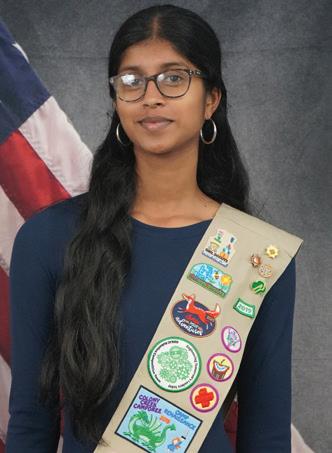
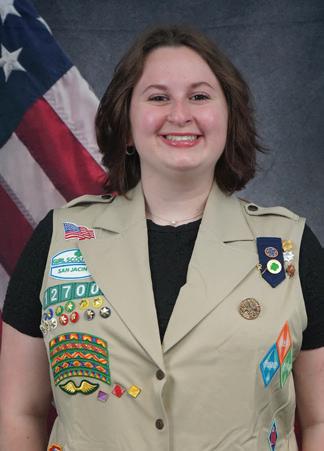
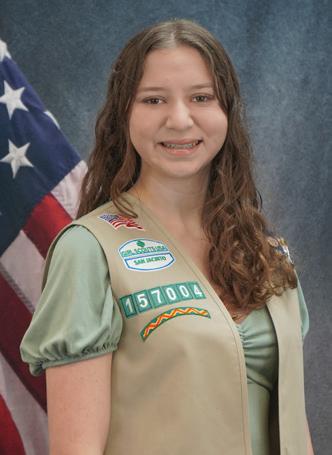
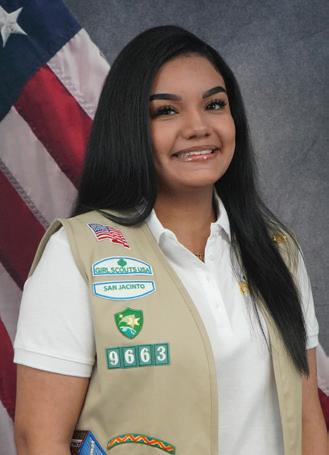
Abby Georgson partnered with Bahr Marine Ecology Lab to educate high school students about trash in the ocean, along coastlines, and the impacts this pollution has on the environment, animals, and humans. Abby and her team led an art activity that used cleaned beach trash and also cleaned up the beach. The high school teachers and Bahr Lab continue to display the students’ projects and plan to continue teaching her lesson plan into the future.
Lillian Gilbert wanted to share how journaling and creative writing could improve mental health with girls her age and encourage them to share their stories. She researched, designed, and then hosted a five-day creative writing workshop. She published the 30 poems and short stories in an online book and on her website, where they are accessible, and other teenagers can become inspired and add their own stories.
Adithi Gorisipati was concerned about the lack of required first aid knowledge for teenagers in public schools. She developed a workshop that was held in-person three times and also online. The project website includes her informational video, a range of scenarios, and quizzes for each section which make it available worldwide and project materials were given to the Red Cross for continued use.
Audra Grassi sought to boost the confidence of children who suffer from hair loss. She partnered with the Pretty Hare Salon and Children with Hair Loss to host two “cut-athons.” Attendees received a free haircut, and their loose hair went to Children with Hair Loss. The nonprofit uses the hair for wigs they give to children. Audra also created an awareness video and showed it during the events. The hair salon plans to repeat her cuta-thon every year.
Anna Gratz developed tools to help increase others’ understanding of disabilities. She and her team created with information about the children’s disabilities to present to their classmates. Anna made a tool kit for them to show how to have an open dialogue with classmates about their disability. She also designed a website about disabilities she shared with Texas Children's Hospital, school counselors nationwide, and disability advocates.
Harmonee Guidry designed a project inspired by her younger brother who has autism. She lead a team that created an information board that addressed the four main misconceptions about autism and included autism FAQs. She and her 10 volunteers worked with a local elementary school and library to hold presentations and distribute autism awareness pamphlets with links to more information. The pamphlets will always be available at the school.
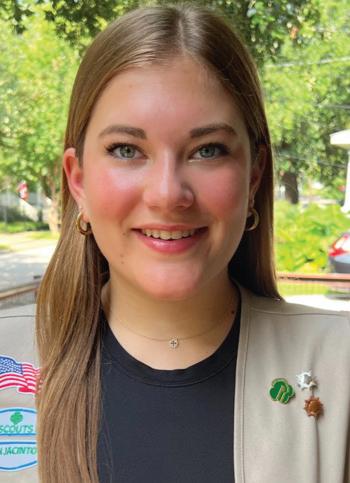
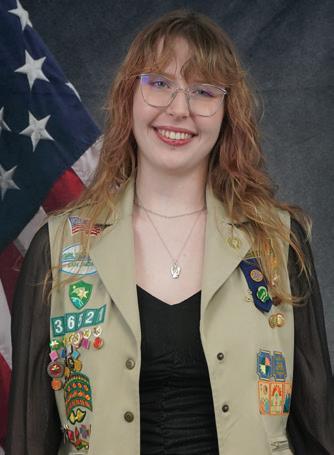
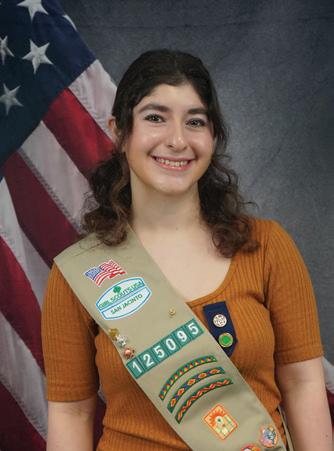
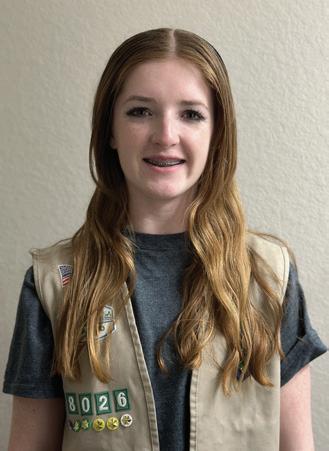
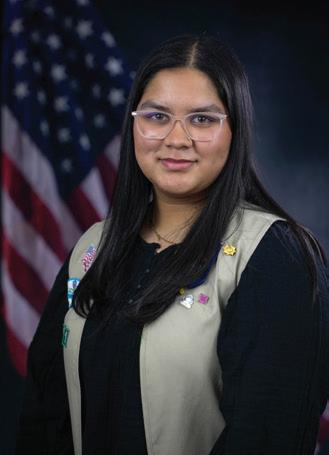
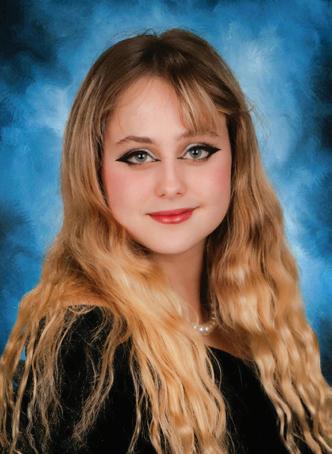
Olivia Guyre connected with local schools and families to collect donated food for children in her area because schools that normally provided the children free lunches were closed. She and her team collected enough food for five lunches during a summer camp for foodinsecure children. They also prepared five different healthy snacks and taught the children how to make them, giving them recipes to take home. A Girl Scout troop with younger girls will continue her project every summer.
Kaitlyn Haynes noticed a barren garden space at Wertheimer Middle School and the lack of gardening opportunities for the students. She built six planter boxes and refurbished existing boxes, created nine informational videos about native plants, and hosted a community gardening event where attendees assisted with filling the planters. Three of her team members, teachers/staff, agreed to sustain her project through the school’s Gardening Club.
Rosie Heghinian developed accessible musical education and activities for children. With one of her music teachers, she created a music curriculum to get kids moving and thinking about music then taught those courses to children at the Santa Maria Hostel which houses rehabilitating moms and their kids. She loaded her lesson plans and videos to her website and then shared it with other children’s organizations.
Katherine Hendricks taught Westview School students with autism how to relax when the environment around them becomes overwhelming to earn her Gold Award. As part of her Take Action project, she held classes for 40 children during summer camp, teaching meditation, breathing exercises, and conscious discipline. Katherine led three volunteers and 10 teachers.
Samaah Huda had a concern for the lack of emotional and academic support for Afghan refugee children. With her volunteers, she planned a weekly reading mentorship program at an apartment complex. Besides reading, the children also learned games, played sports, and had snacks. After a few months, their initial group of 18 children grew to 30. The reading supplies were left with the reading group, and access to her website will help continue the meetings.
Amanda Huttenbach raised awareness about the importance of green spaces, especially in urban areas like Houston. Amanda partnered with Willow Waterhole Greenspace Conservancy, which provided an urban space to plant new trees. She and her team removed dead trees from the space to open up room for new plants and removed debris. Her website describes how best to plant a tree, which native plants are best for South Texas, and includes the video made during the planting process.
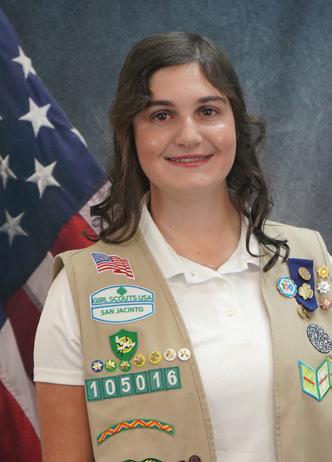
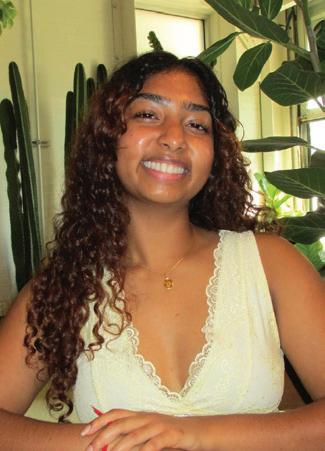
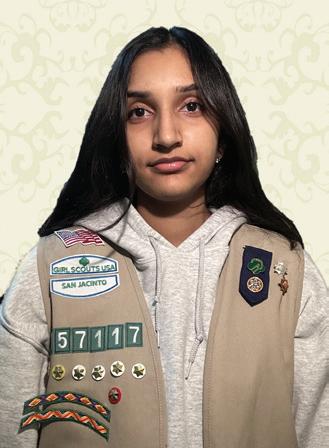
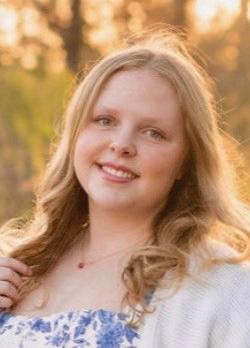
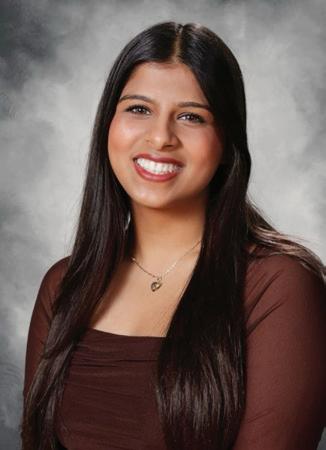
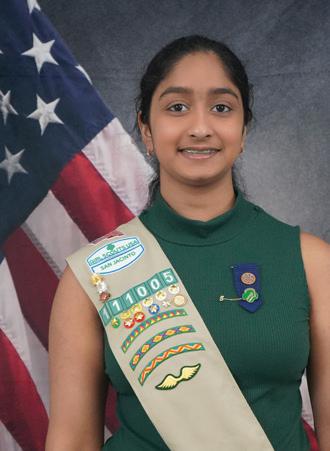
Lillian Jeffrey created a sustainable, inexpensive water source for wildlife and farm animals on Auga Vida Ranch. She and her team built the watershed together at one ranch and shared the design with other ranches. Checking in with a game camera a month after installation, the watershed had attracted several types of wildlife, including foxes, hogs, axis and white-tailed deer, racoons, armadillos, skunks, rabbits, and ringtails.
Sahana Karthik designed a literacy project to help children with cancer who lose time in the classroom due to medical procedures. She organized an onsite library at the Halo House, a temporary apartment complex for the children’s families. Sahana filled the library with books, then planned and hosted literacy workshops for the children and their families.
Jhanvi Kodikanti partnered with Texana, a center for developmental disability services, to create fun ways for children to develop important life skills through crafting. She and her team created several craft kits with guided activities and held workshops for the center’s clients. She also designed an overview book that the center can use.
Sarah Lack noticed a significant increase in concussions among her peers and decided to focus on educating teenagers and their parents on the causes, treatments, and prevention of concussions. She created a free website with this information along with the dangers and possible severity that can be caused by concussions. She marketed the website at her school by posting flyers with QR codes in various classrooms.
Kashish Lalmohammed enhanced public safety and emergency preparedness in her community by providing a comprehensive training session for CPR and first aid certification. All the participants became certified, ensuring a lasting impact on public safety. She and her team also created an Instagram page to function as a refresher for anyone who is CPR certified.
Navya Makkapati taught students in the Cypress Fairbanks Independent School District about the importance of disposing of electronic waste sustainably. She created a game for three grade-level groups. Moreover, she partnered with the CFISD Technology Center to hold an electronic waste drive, drawing more than 100 families resulting in 400 electronic items donated for recycling.
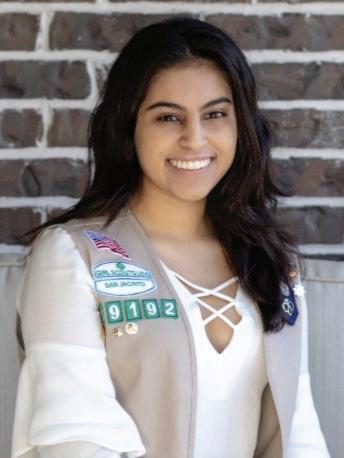
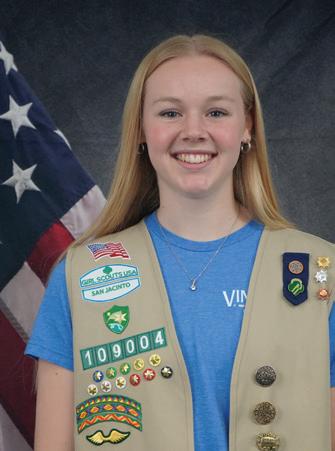
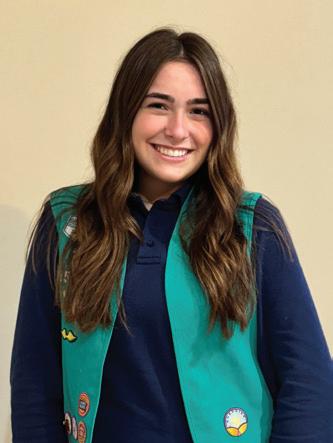
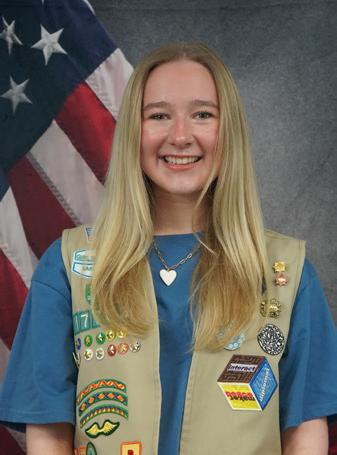
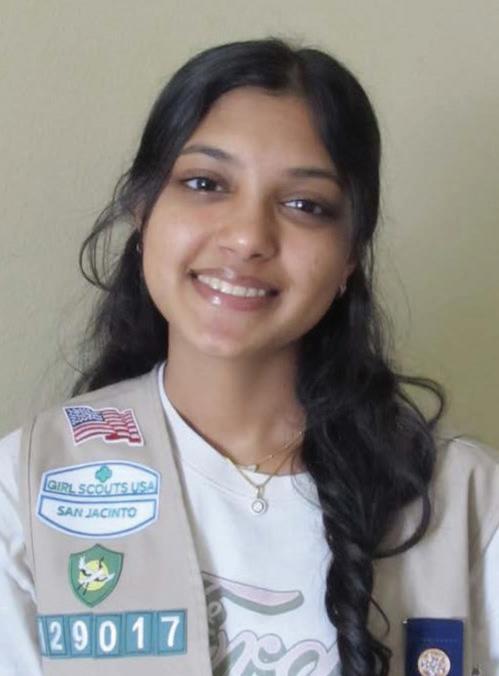
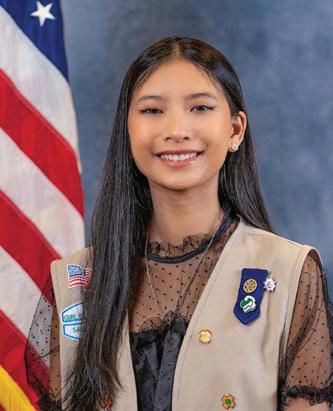
Elsa Mawani was inspired by her love of reading to provide educational support to children who miss school due to hospitalization. With her team, she collected 775 books and created a literacy website with an anonymous feedback survey, literacy games, and read-aloud videos of her reading volunteers. She made brochures with QR codes linking to the website so resources are available for the hospital staff and future volunteers.
Bailey Meeves wanted to counteract the summer reading slump in her small community, so she created a safe place for kids of all ages to get free books. She and her community built a large library inside a church and a free tiny library in the church parking lot, open 24/7, with a huge selection of books to choose from. The 145 children who live close by can easily and safely walk to the church to get books and continue to learn year-round.
Ava Moore had a concern for the wasting of water and lack of conservation in her community. She partnered with Houston Public Works to hand out 50 toilet tank displacement inserts which save water with each flush. Presentations at middle and upper school assemblies educated over 400 students about the importance of water conservation and how they can make a difference.
Hadley Moore wanted to give refugee and immigrant elementary aged children a safe place to practice English. She partnered with Prestige Learning Institute to hold an ESL Summer Camp for 96 children which included art projects and literacy activities. The lesson plans and videos will continue to be used by the institute and others online.
Sanya Murarka helped seniors with dementia express themselves and feel joy in doing activities. With her team, she planned and held about 30 art and play therapy sessions at the Sinceri Senior Living Center which included a variety of arts and crafts, live and recorded music sessions, and the playing of various board and other games. A binder with sessions will enable the center to continue offering this to their clients in Houston.
Abigail Nguyen worked with 30 volunteers and her local animal shelter to spread awareness about animal cruelty and educate the public about the proper care of animals. Her project included creating educational flyers, a website, and YouTube video, which will continue to be managed by the animal shelter. They also taught younger Girl Scouts how to make dog enrichment toys that were donated to the Beaumont Animal Shelter.
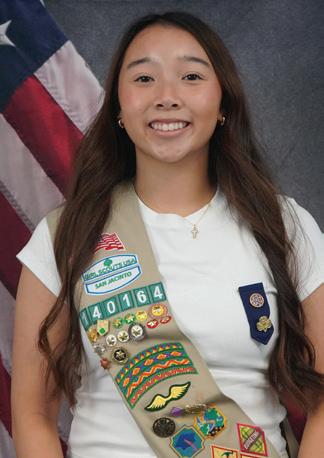
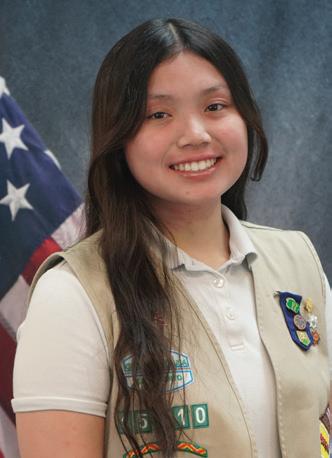
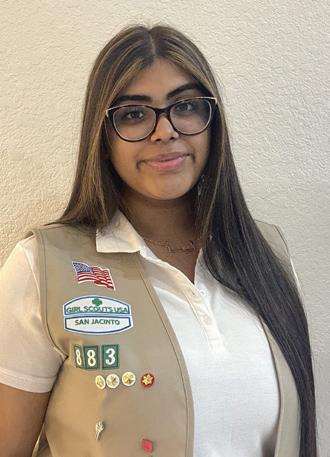
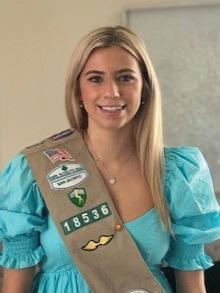
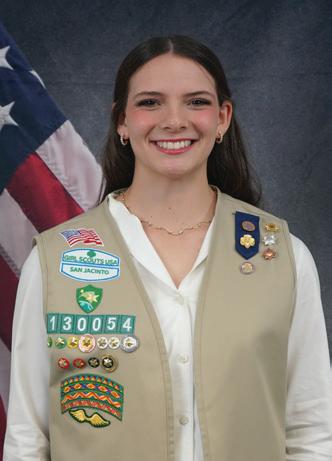
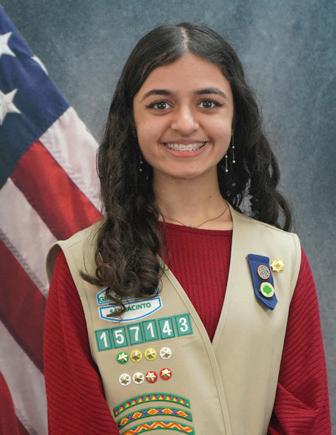
Annie Nguyen partnered with Clear Lake volleyball to raise awareness about childhood obesity. She and her 18 volunteers planned and led two volleyball camps for kindergarteners through seventh graders, providing fun physical activities, a nutritional presentation, and healthy snacks. She also created brochures and flyers and distributed them at little free libraries and two local schools. Her website provides access to the resources.
Emily Nguyen added a veteran memorial at the Living Legacy Center. During four gardening workshops and working with three dozen volunteers, Emily installed a flower garden, solar-powered lights, and plaques describing the military branches to encourage visitors to remember those who served our country. Volunteers at the center participated in creating the garden and will maintain it for the community.
Nysa Noor, after finding that almost half of all people aged 65 and older struggle to navigate the internet, developed a userfriendly lesson plan. She held workshops at a local senior center to teach digital skills and help seniors become more comfortable with technology. She then shared the lesson plans with them and 10 other community senior centers to ensure the continuation of these workshops.
Sam Ohlenforst created a project that would give underprivileged students experience with STEM. She partnered with the SpringSpirit organization, where she volunteered for two years at its afterschool program. They worked together to design and build an eco-friendly raised-bed herb garden for their clients’ use and developed units on biology and garden maintenance. SpringSpirit plans to continually use her hands-on learning units and video on making an insect nest/hotel.
Katherine Page had a vision to bring the sport of archery to the youth in her community to motivate them to get outside more. She partnered with the YMCA of Southeast Texas to build a fully equipped outdoor archery range at their facility for her Take Action project. The range will encourage outdoor activities and be used for fall festivals, summer camps, and more as it is available by reservation by other community youth groups.
Juhi Pancholy took the initiative to educate her community on the correlation between menopause and heart disease. She worked to create educational presentations and informational brochures focused on raising awareness. She used the brochures during her presentation at a local library. She had the brochure translated into Spanish. The brochure will continue to be distributed by the Glazier Senior Education Center.
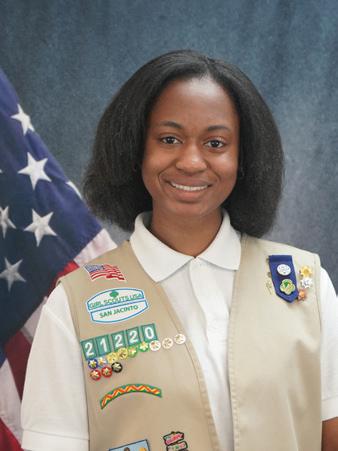
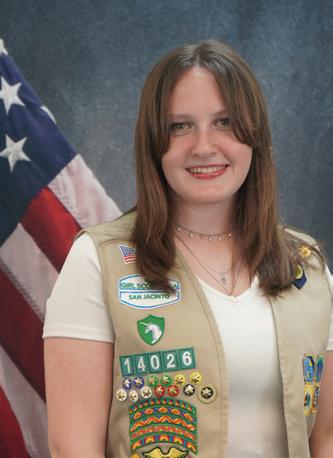
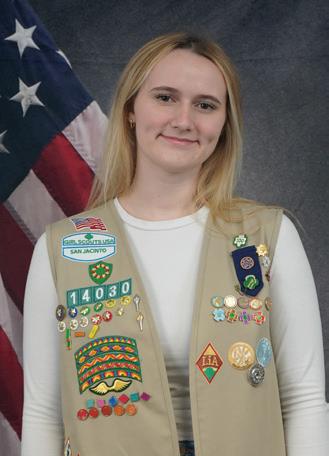
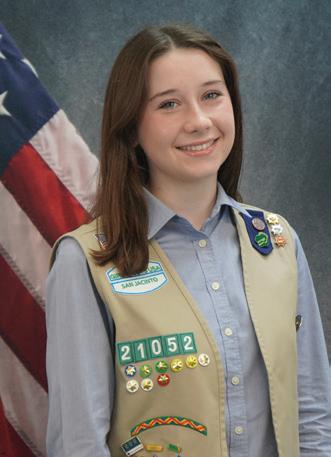
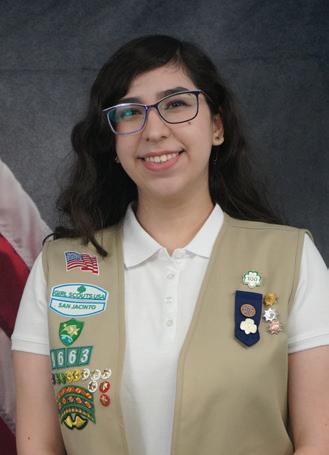
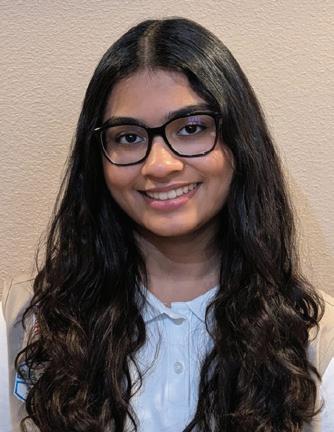
Clarissa Parker wanted to help young people develop healthier relationships with social media and understand its impact on mental health. She researched and designed a website with resources, including pamphlets, videos, and quizzes. With her team, they hosted two workshops on Zoom on how to build confidence and self-esteem on social media. She also partnered with “We are Pearls,” which will use all her resources in their workshops on mental health and online safety.
Eileen Poninski focused on improving young girls’ self-esteem and self-confidence. She partnered with Greater Life Grief Counseling and Axis Aerial Arts to hold a workshop for 15 girls. She wrote a children's short story "From Shy to Soaring: Cecilia's Flight to Confidence," for a collaborative children’s book. She posted a YouTube video to highlight the workshop, which Axis Aerial Arts will conduct annually.
Caitlyn Porter chose to work with the Houston Mounted Patrol to improve the training and desensitization opportunities for officers and their horses. A modular training course was designed, built, and installed at the Mounted Patrol barn and an open house held for the public. An instruction manual on how to build and use the training course was created and is available to other mounted patrols across the country.
Aurora Poskey worked with the Haven, an organization for girls who have been human trafficked. After her research revealed the benefits of participating in outdoor activities while recovering from traumatic events, she and her team created three different spaces: the Outlet Garden, Sensory Garden, and Pollinator Garden, which the Haven will maintain.
Andrea Ramirez had concerns about the low voter turnout counts during local elections, so she designed a project to inform high schoolers through adults about their responsibilities as citizens. She held seminars at her school and local library that included information about the various levels of government, why it is important to vote, how to register to vote, and how to get involved. A video of her seminar at the library will be housed there for future potential voters.
Arissa Rehman realized many of her peers experienced the same stressful transition to high school that she did, so she hosted a webinar focused on helping middle schoolers prepare. Guest speakers included high school and college students for a Q & A session along with a psychologist to assist in managing stress. Her presentation, which included an infographic, was shared with her high school counselor for use with future students.
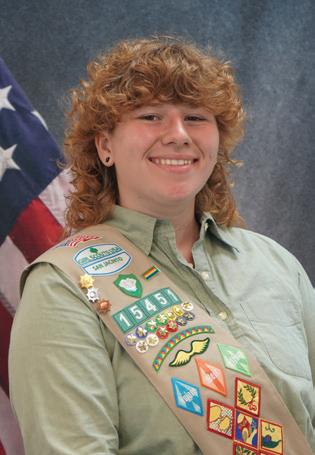
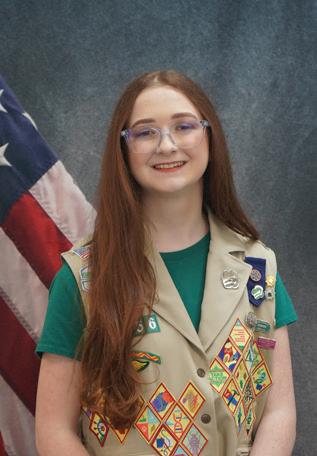
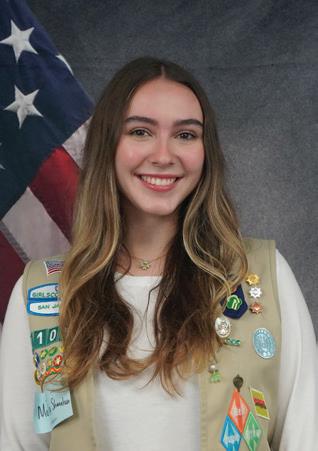
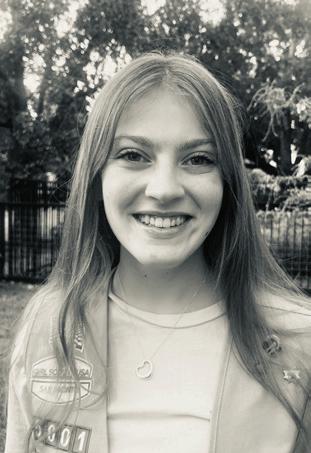
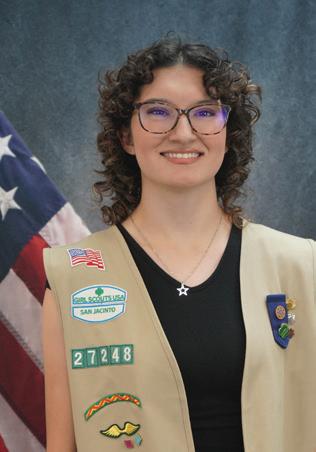
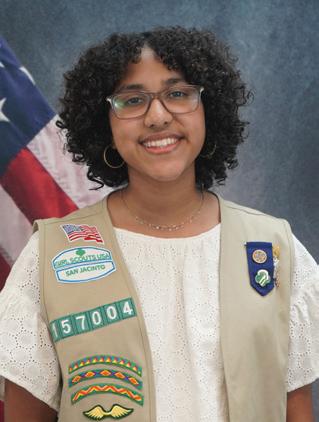
Ella “Leo” Samuel led her team to create a hybrid, in-person, and digital wildlife trail at Casa Mare to encourage Girl Scouts to learn about conservation and develop an appreciation for wildlife. She created and strategically placed five trail markers with QR codes around the camp. The QR codes link to GSSJC’s Community pages that provide information about plants and animals native to the area. She and her team also planted two pecan trees to replace trees that were lost.
Madeleine Schimmer noticed that younger students in her district lacked the opportunity to learn about STEM in agriculture. She designed two STEM activity kits, tested them, and demonstrated them to the public at two county fairs. She held a workshop to train nine student leaders on using the STEM kits to reach younger students. She hosted two STEM activity meetings for younger students. The Fort Bend County 4-H will store and manage the remaining kits.
Molly Shanahan created videos, designed to develop habits to support sustainability, on the topics of Reduce, Reuse, Recycle, capitalism, and ideas for their school and home. Posters were created and placed around the school to lead the students to 28 posts on various locations to raise awareness of ways to take care of our environment.
Hazel Smith wanted to help people with degenerative brain disorders after the diagnosis of a family friend with dementia. She visited a memory care facility to read poetry and listen to music with residents. She then created a curriculum to show others how to recreate her project at other facilities. Hazel held weekly sessions that led to residents recognizing and greeting her with song titles. The IB Diploma Programme at her school will continue her project.
Zane Smith-Bradford focused her project on educating parents of children who are clients at the Sole-Ana Stables about equine assisted therapy and its benefits. She created a parent brochure with detailed information about the exercises and designed a coloring book for the children. Her project resulted in improved parent involvement. The organization will continue to provide her brochure and coloring book to its clients and families.
Allison Sobrinho partnered with the Texas Master Naturalists Coastal Prairie Chapter to raise awareness about pollinators and native plants. With her volunteer team, she seeded a pollinator garden at a nature park and created signs for the garden. She also created brochures that focused on educating park visitors on the importance of taking care of pollinators and native plants. Allison produced a YouTube video on this same topic.
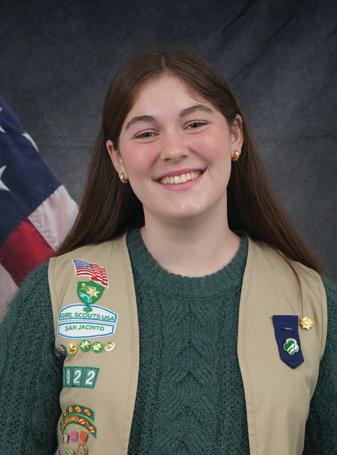
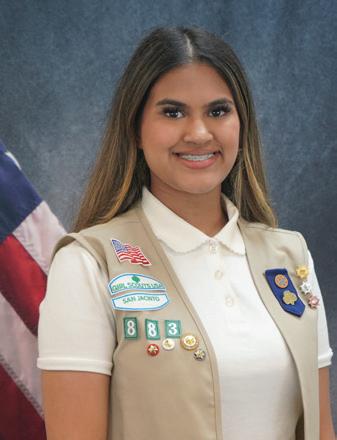
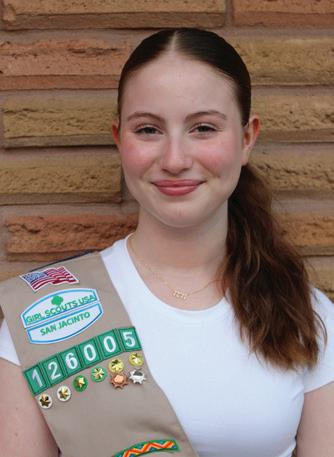
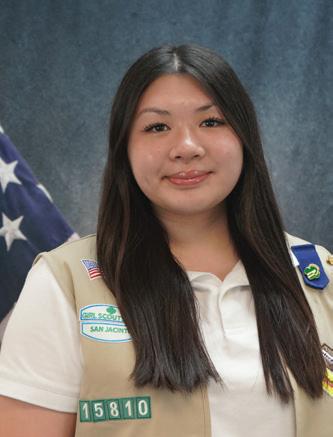
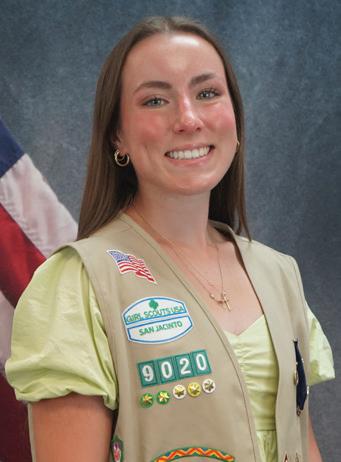
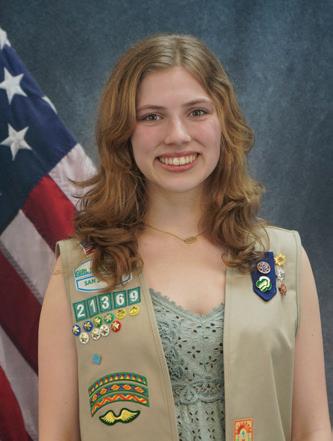
Avery Stephens partnered with Montgomery Elementary to research, plan, and create Pre-K Bridge Boxes which included school supplies, pre-k curriculum, additional learning tools, and instructions. They provided over 250 bridge boxes, using both English and Spanish, to preschool students at three elementary schools.
Aalia Sunesara developed a Take Action project aimed at improving the mental health of senior assisted living residents to earn her Gold Award. With her team, she worked with 28 seniors to create the garden and fill it with plants. They also hosted monthly mental health awareness sessions. Her gardening and mental health video has been shared with other senior living locations.
Lily Syna designed and created a pollinator garden and educated her community about the importance of protecting and preserving pollinators and their habitats. Lily collaborated with her high school and the Houston Arboretum on the project. She donated related books to 14 elementary teachers who included pollinators in their curriculum.
Emily Thai found out the recycling rate in Houston was just 18% so she developed a project to raise awareness. With her volunteers, she researched, created, and led three workshops for elementary children on the importance of recycling, reusing and reducing. They also built a picnic table with benches out of upcycled wood which educated the community about how recycling is important and how it helps our environment.
Mariana Torres worked with the National Houston Cemetery on a beautification project that included planting and caring for flowers, then created a presentation outlining the needs of the cemetery as well as statistics surrounding cemeteries lack of support. Her presentation was shared with volunteer groups who have the ability to rise to action and support the cemetery which will spread awareness and provide support to the cemetery.
Sarah Vanlandingham organized a week of activities and informational lessons for 40 young campers at her church's summer camp. They taught the campers safe knife and cooking skills, basic first aid, the importance of nutrition and hydration, how exercising regularly can be fun, and how to work together as a team. An online document was created for anyone who wants to start their own camp.
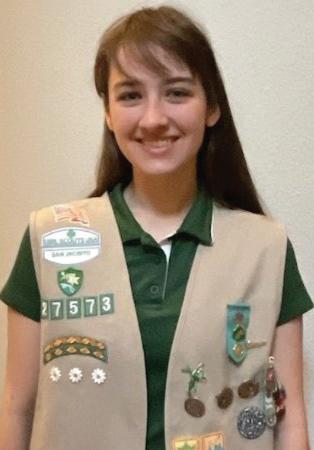

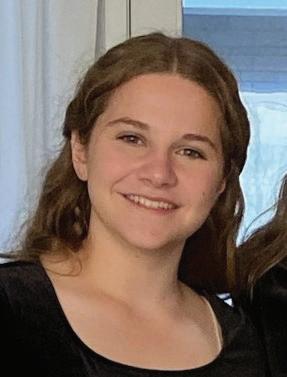
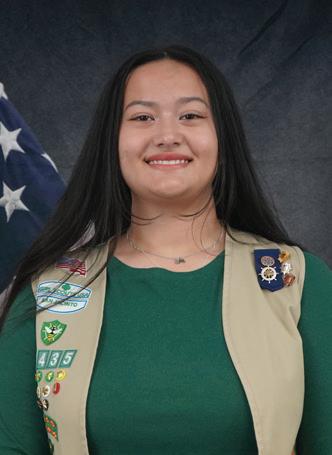
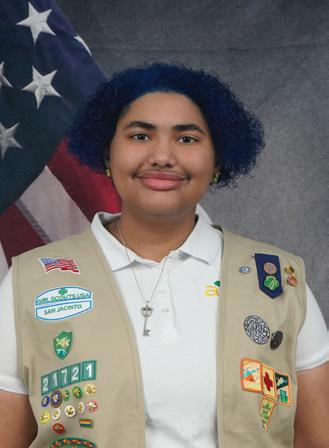
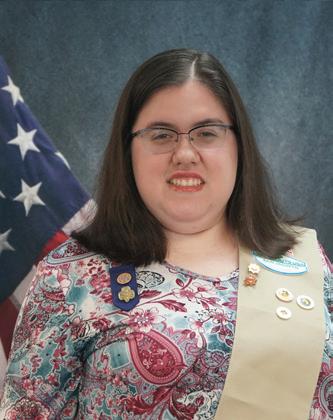
Clare Varanauski noticed her neighbor pour pesticide down the neighborhood sewer drain and decided to research alternative ways to control insects. She shared this information with others at booths, which included a hands-on activity and recipes for safe treatments, at local farmers’ markets, Friendswood Park events, and her school’s WINGS club. An environmentfriendly garden care curriculum was created, which The ECO Club shared with younger students and will continue to do annually.
Pragya Vetri designed a preschool fire safety curriculum because she was concerned about the amount of house fires in her community. The curriculum includes lesson plans and safety games. She and her team also wrote and illustrated a children’s book, created posters for the school, and made three fire safety videos. Pragya read the book to the students, presented the curriculum to the school, and collected all the resources into a website.
Annie Villa worked with Mandell Park to educate Houstonians about native plants and the biodiversity they foster to earn her Gold Award. She placed QR codes around the park that led park-goers to webpages she designed. The webpages include information on native plants, photos of the plants, and a plant scavenger hunt. She gave two presentations to students to raise awareness about the native plants’ importance to Houston’s ecosystem.
Kaili Vogt, inspired by her love of sailing, planned a way to give potential Mariners a deeper understanding of sailing concepts. The Quizlet flash cards that she created gave them a way to collaborate to learn skills, get to know their peers and aides, and learn to work as a team. The cards are available to other Mariner Programs across the U.S. and interested sailing students at no charge.
Ariana Williams focused on spreading awareness of the suicide and crisis hotline 988 among students and teachers at the South Early College High School. She directly targeted the 391 students with inperson presentations, distribution of wallet sized cards about 988, and a social media campaign using the project’s Instagram account. Her project has become part of the school’s permanent curriculum.
Samantha Winder partnered with the Brazosport School District to create a STEM activity resource library to more than 100 elementary and middle school teachers. The library consists of more than 30 online activity lessons hosted in the BISD curriculum website for teachers to download. She and her team also prepared and delivered hands-on-learning kits for teachers to check out and use in their classrooms.
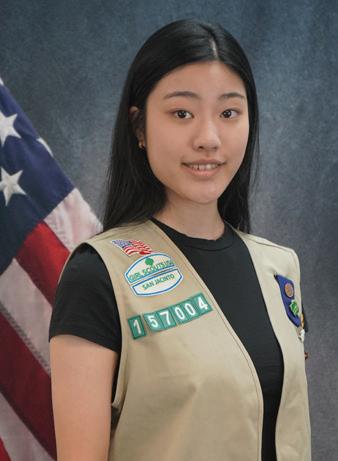
Megan Wu created a retrieval-augmented generation system so high school students could utilize Chat-GPT to its fullest potential. She designed a pamphlet with the history of RAG systems and instructions on how to create one of your own. The pamphlets were distributed around the school, placed in the library, and with the computer science teacher. She held two online presentations.
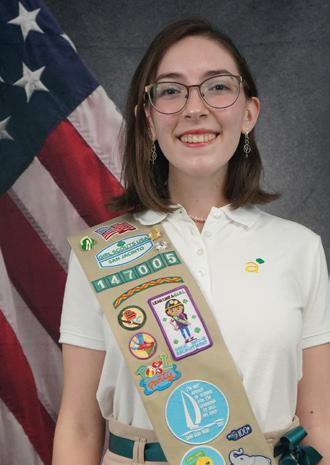
Isabelle Zaske has enjoyed thrifting her entire life, so she wanted to persuade her peers to donate their clothing to avoid fastfashion choices. She and her team posted an online map of where to thrift in Houston and built a clothing rack to hold sustainable thrift clothes for the student closet at her high school and hosted a clothing swap at the school. The Climate Club will host the clothing swaps annually and the student closet will remain open.
Girl Scouts in Troop 136338 fondly remember the well-maintained garden at their Houston elementary school, with its blooming flowers and lush trees. However, as they progressed through the grades, the garden deteriorated. Before moving on to middle school, the troop revitalized the garden and earned a Bronze Award.
“We saw that the garden was very dry, and the plants were dead,” said Girl Scout Ingrid. F. “It was boring to look at. We wanted to try to clean it up.”
Ingrid and her troopmates - Antonella D., Nicole N., Annabella S., and Luciana R. - first sought permission from the school principal. They received permission and began removing the debris from the garden to replace it with colorful flowers and trees. The troop used the school computer to research suitable plants and how to make compost to enrich the soil. They also used their troop funds to buy the plants for their Magic Garden project.
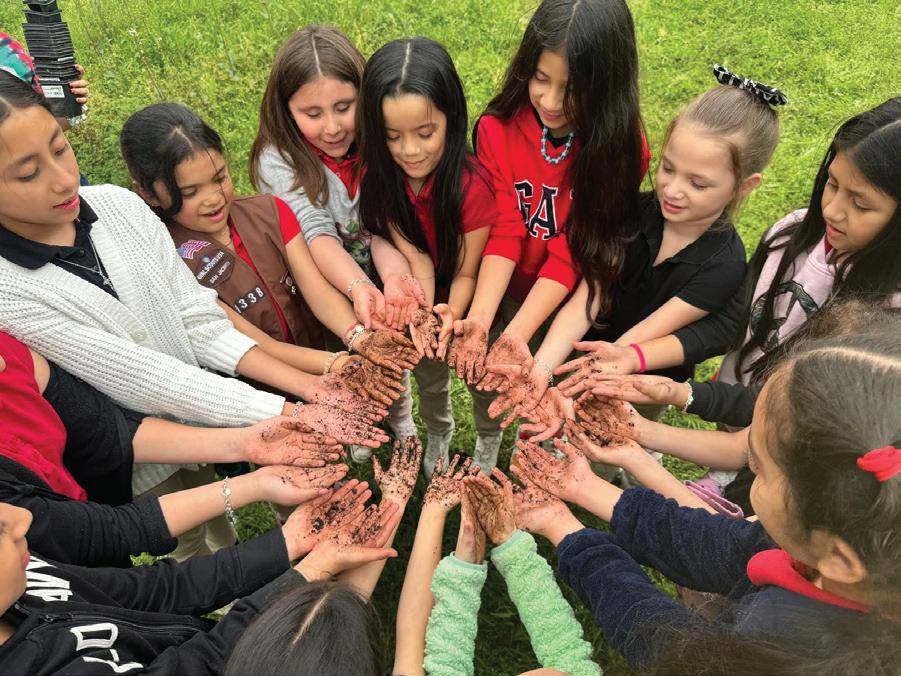
After cleaning the garden, the girls had to tend to the soil. The girls collected fruit and vegetable scraps from their homes and combined them with other materials to create compost. Since the soil was dry, they soaked it before mixing in the rich compost and new soil. Then, they began the enjoyable part of the project – planting flowers to restore the garden’s beauty.
“It took one week to clean the garden and three weeks to add flowers,” Antonella said. “It was a lot of work.”
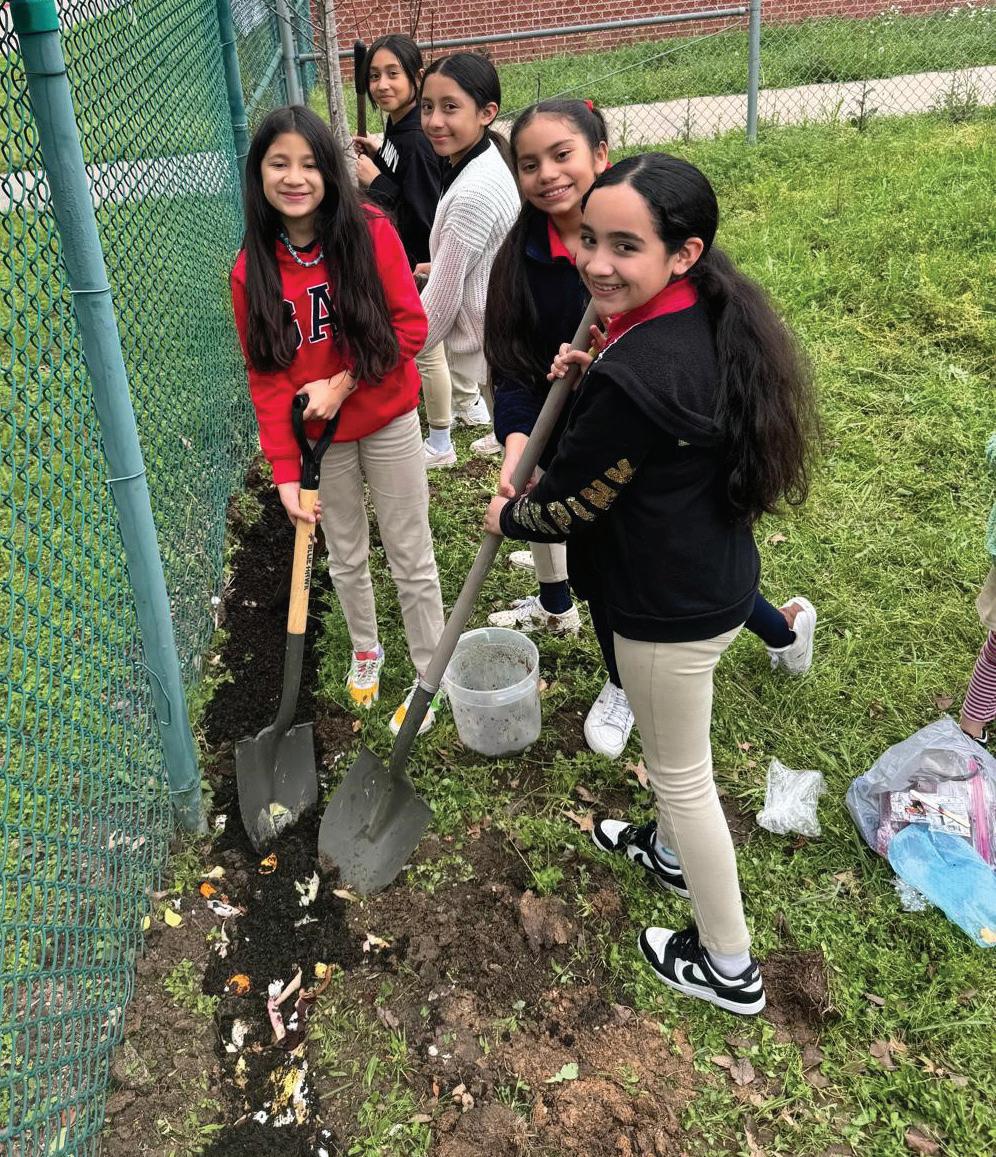
Teamwork was essential to their success, the troop said. The girls had to collaboratively decide which flowers to plant, where to place them, and how to incorporate the compost. “You have to communicate with your partners and know what you’re in charge of,” Antonella said. “It takes patience to do a project with a lot of people.”
The troop learned that planning is also vital for success. Nicole thought they could improvise, but she quickly realized that a structured plan was necessary to complete the project. “It changed my mind set about how to do things. I learned there’s a process to make the garden grow.”
All the girls now know how to care for plants, including what nutrients they need, when and how much to water them, and which ones thrive in certain weather conditions. They have shared this knowledge with Daisy and Brownie troops at the school to ensure the garden remains vibrant with “big and shiny” plants. The girls return occasionally to check on the garden’s progress.
The girls said it was a pleasure and an honor to help the school, providing students with a beautiful and happy place to play. “It was fun to work together and to get to know each other better and help the world be a better place,” Nicole said.
The Bat Girl Investigation Squad, better known as Troop 143059, collaborated with U.S. Fish and Wildlife Service and Armand Bayou Center biologists to collect data about the bat population in the Greater Houston area. Using conservationist technology, the squad listened to bat calls to determine the type of bat species and the level of bat activity in the Armand Bayou area near Clear Lake. The girls earned a Silver Award for helping to protect the bat population and contributing to scientific research.
The squad – Addison H., Riley J., Emma L., and Kathrine P. – became bat experts, learning about different bat species and how they are an integral part of the environment in Southeast Texas. In addition, the girls say they learned how light and physical pollution can harm the bat population.
“I didn’t know the bat population was falling off due to white-nose syndrome. It causes the bats to itch and die,” Emma said. “I also didn’t know they pollinated so many plants.” Bats also like quietness and a wide area to roam, Addison said. “It’s important to keep them safe because they are a part of our ecosystem,” she said.
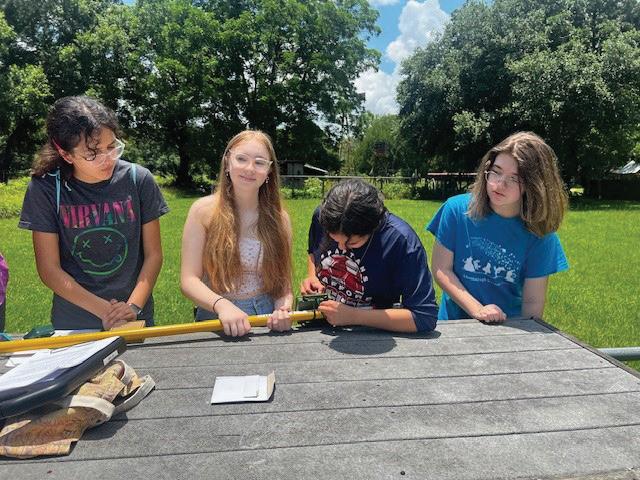
The troop went on night bike hikes with the biologists to find the best location for bat activity and to set up their monitoring devices – a Song Meter and the AudioMoth. The girls attached these devices to a 20-foot pole near the Swayer’s Pond, an ideal place for bats to forage insects and drink water. The devices had to be attached carefully to keep the listening microphones from getting feedback. The devices were placed in the area once in the winter and once in the summer to gather data at various times.
The troop and biologist later compared the data and discovered that the bats were more active in cold weather. The discovery debunked the girls’ theory that the bats would be more active in the summer. They assumed the bats would be hibernating in the winter, but they were active from dusk to dawn, according to the data collected from the devices.
The troop had two possibilities for lower activity in the summer: One, the longer summer days prevented the bats from feeding because there was more light pollution, and two, bat activity declined due to pesticide contamination. The girls also detected the type of bats in the area. The most recorded bat calls were from the Mexican free-tailed bat, the Big Brown Bat, and the Horay bat. These bats are typically found throughout the Southeast United States and Central America. The girls said the most interesting discovery was that several species of bats were detected by the Song Meter but not by the AudioMoth. Those species included the Evening bat and the Southern Yellow bat. They surmised that if the bat calls were faint or far away from the AudioMoth, it would not record the calls. The Song Meter, on the other hand, detected more species of bats and recorded their calls even if they were faint or far away.
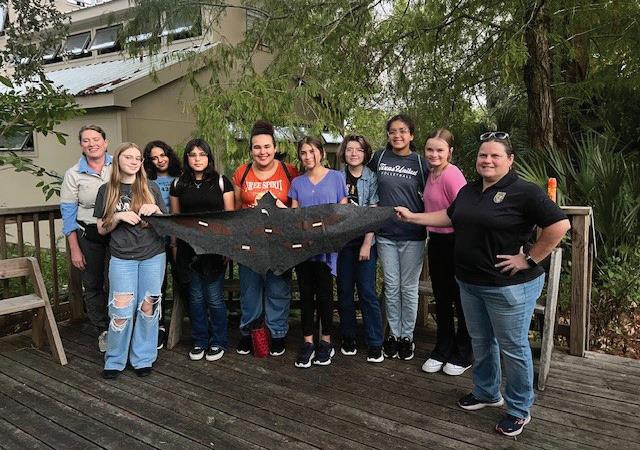
The troop spent many late nights listening to the chirping bats. They even heard an owl and crossed paths with a crocodile in the lake. They also faced some obstacles - figuring out how to attach the devices to the poles with rubber bands and zips without disturbing the sensitive listening microphone and battling changing weather, which forced them to set up the devices again and re-record information.
“It took a lot of work. We had to make signs and stay up late to set up the devices,” Katherine said. “But we learned team building and how to distribute the work evenly.”
The troop created a pamphlet that explains the devices they used for their research and describes the varied species of bats. The information is also available on the troop’s website.
In addition, they gave a presentation at Armand Bayou Center for elementary school children who were fascinated by the troop’s work as bat investigators.
The Highest Awards Committee is comprised of council-wide volunteers who support girls and their volunteers through the Gold, Silver, and Bronze Award processes and through trainings, mentorship, and feedback. They also work to promote the incredible benefits and impact of the Highest Awards program to the Girl Scout community and the community at large.
Thank you to the following volunteers:
Gold Award Steering Committee
Thea Fabio
Bonnie Homier
Janet Jaime
Gold Award Mentors
Erin Abbey
Denise Babecki
Linda Carrington
Ashley Crouch
Devna Dayal
Amy Earle
Helene Gallaway
Jessica Heppard
Bonnie Homier
Janet Jaime
Margaret Lincoln
Amanda Lohec
Hillary Mihle
Shauna Noonan
Michelle Phillips
Hattie Saulsberry
Tracy Simmons
Katie Spicer
Sheree Stubblefield
Gold Award Review Board
Stephanie Bejune
Petrina Brown
Thea Fabio
Corrie Jenkins
Sharon Jones
Novella McGinnis
Cindy Miller
Janine Shipman
Brenda Williams
Gold Award Members
-at-Large
Magna Cayll
Renota Shepherd
Zahra Sulemanji
Highest Awards Specialists
Ayesha Baloch
Ava Black
Shantell Brown
Megan Carson
Devyani Dayal
Adoriam Dewalt
Ariel Dewalt
Esha Garg
Vaishnavi Girish
Arnaz Irani
Jalynn Justice
Rachel Kee
Kavya Malgi
Jada Pierre
Tatiana Rachuk
Riley Rexford
Ariah Richards
Vivienne Roselius
Anisha Sakhare
Carrie Schoech
Janavi Seshradri
Claire Shenoi
Sophie Snapp
Ava Tobar
Irene Zheng
Silver Award Committee
Magna Cayll
Debbie Morrow
Gail Tompkins
Janine Shipman
Darlene Wafer
Highest Awards Specialist Team Coordinators
Amy Earle
Margaret Lincoln
Maleeha Rizvi
Hillary Mihle
Janine Shipman
Tracy Simmons
Aging Gracefully Initiative
Agua Vida Ranch
Atascocita Middle School
Axis Aerial Arts
Bahr Marine Ecology Lab
Beaumont Animal Care Shelter
Brazosport ISD
Children With Hairloss
Cinco Ranch Sinceri Living Center
City of Sour Lake
Clements High School
Corridor Rescue
Cullinan park
Cy-Hope
Cypress Fairbanks Independent School District
East Chambers Elementary School
Energy Institute High School
FACES
Fort Bend County 4-H
Fort Bend County Libraries
Friendship Baptist Church
Girls Who Believe
Halo House Foundation
Harris County Public Library Atascocita
Houston Mounted Patrol
Houston Public Works
Houston Youth Symphony
Ismaili Health Board
Kids Meal Organization
Klein Forest Orchestra
Knights of the Grail
Kurth Memorial Animal Shelter
Living Legacy Center
Lumberton Highschool
Mandell Park
Mariners SIG
Mei Zhu, computer science expert
Montgomery Independent School District
Moody Gardens
Multicultural Center
Octavia Fields Library
Our Lady of Lourdes Catholic Church
Pasadena Learning Center
Port Arthur YMCA
Precious Pearls
Premium CPR
Prestige Learning Institute
Red Cross
Santa Maria Hostel
School of the Woods
Sevalaya Orphanage
SoleAna Stables
SPEAK Program at Fall Creek Elementary
St. Paul's UMC
T&T Educational Solutions
Texana
Texas Children's Pediatrics
Texas Shriners Children's Hospital
The Haven
The Houston National Cemetery
The Nehemiah Center
The Woodlands Methodist Church
Village of the Heights
We Are Pearls
Weber Elementry School
Wertheimer Middle School
Willow Waterhole